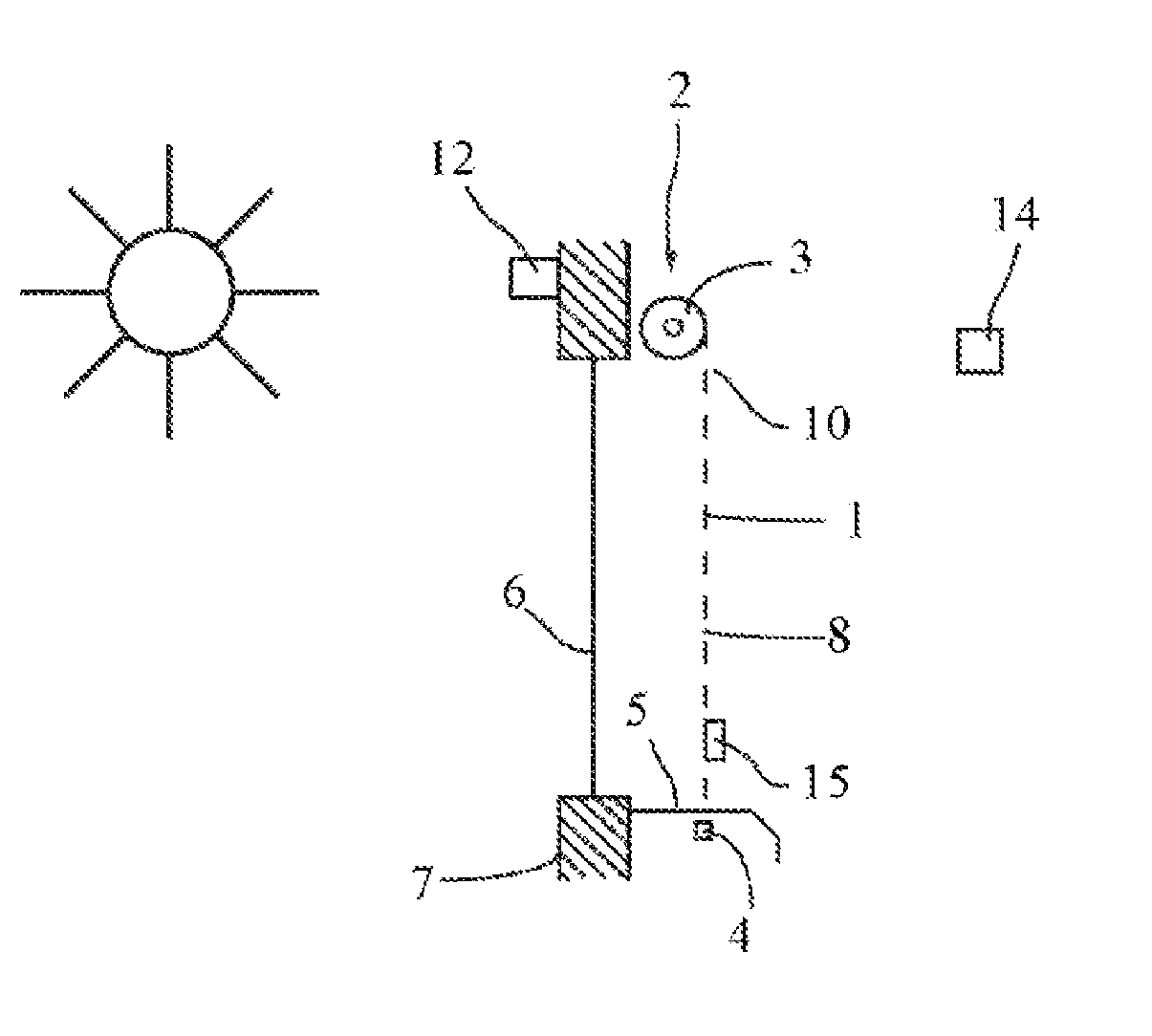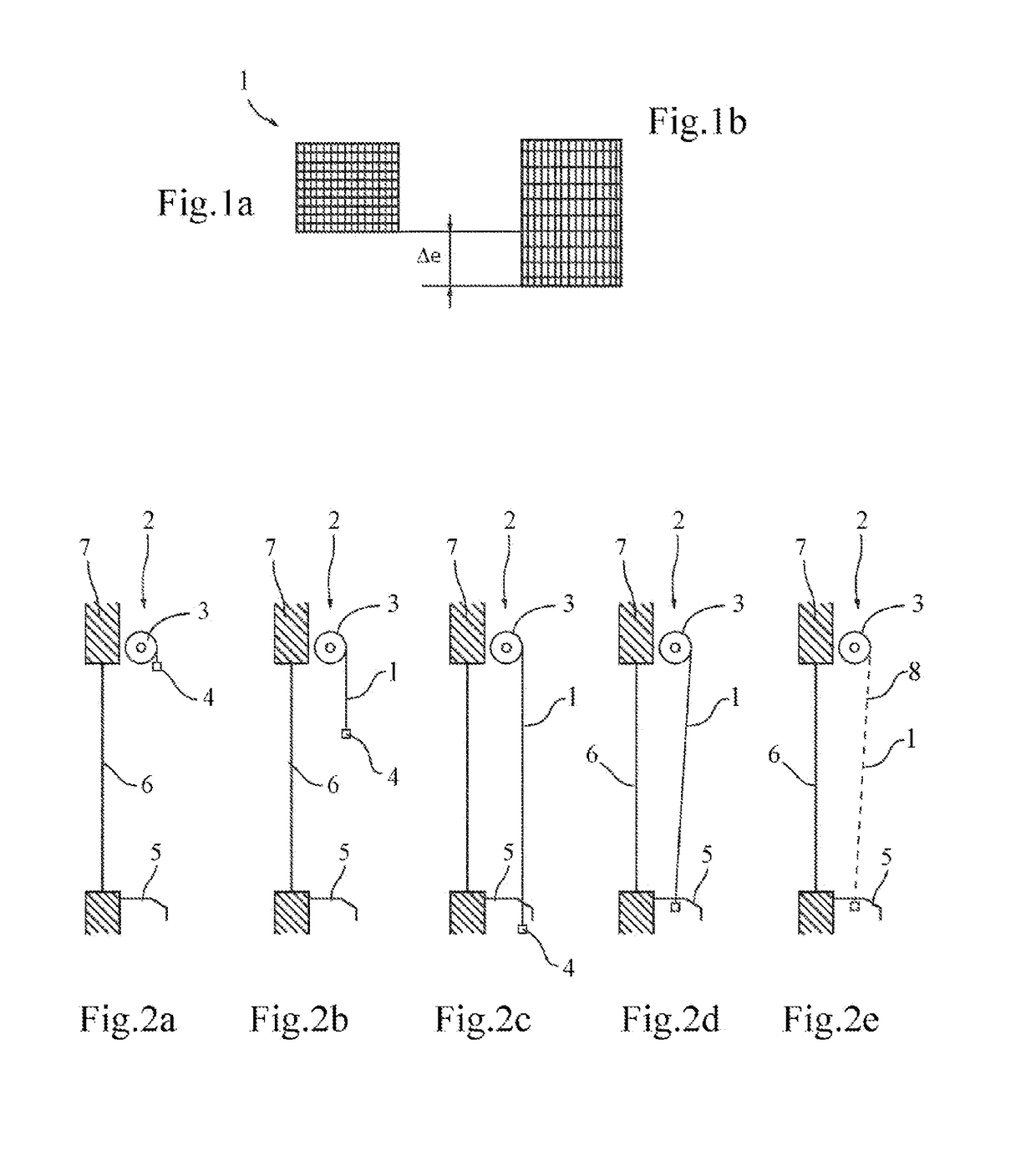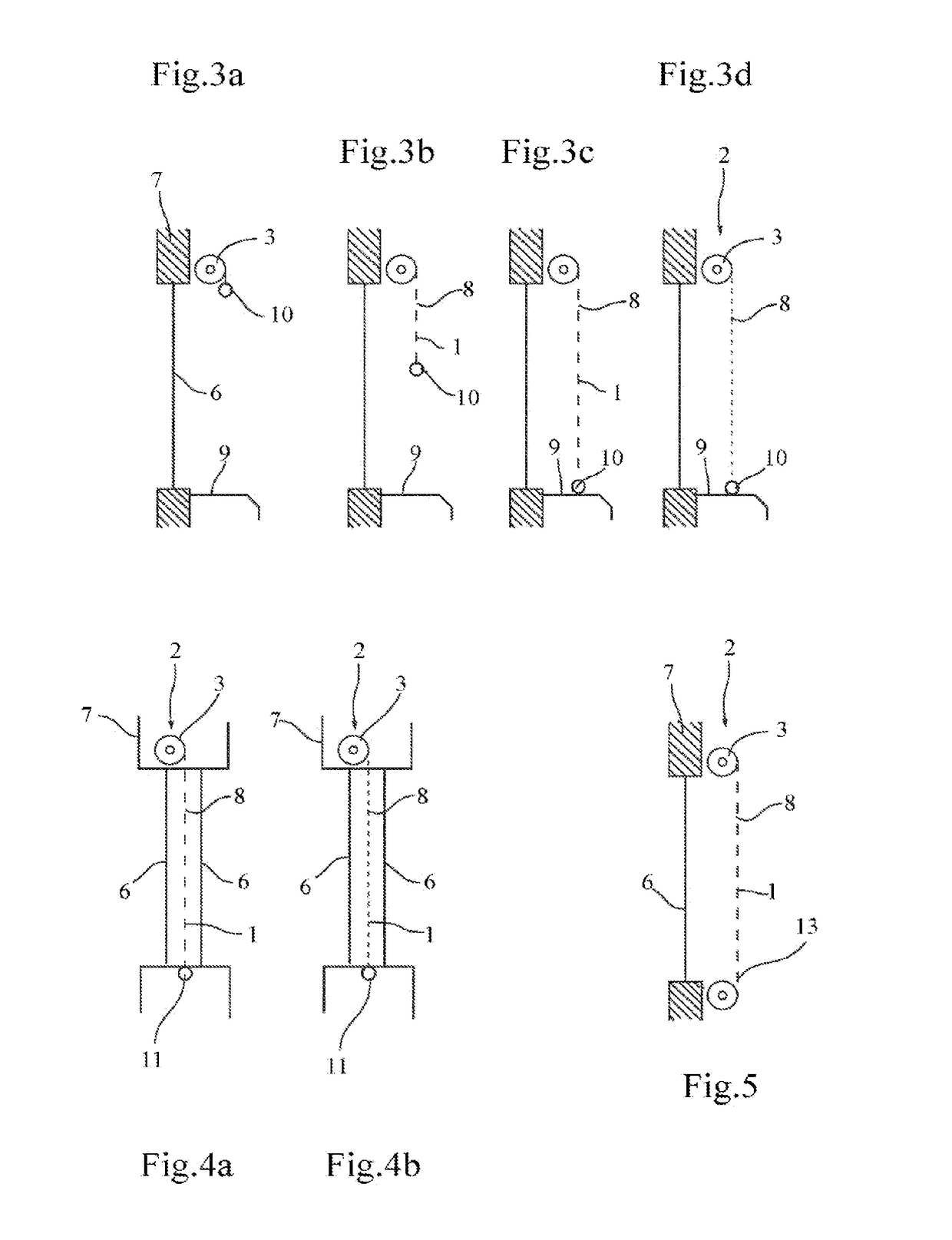Method for controlling an elastic extensible screen having a variable degree of opening and suitable control device
a technology of elastic extensibility and control device, which is applied in the direction of light dependant control system, sustainable building, building components, etc., can solve the problems of manual adjustment and difficulty
- Summary
- Abstract
- Description
- Claims
- Application Information
AI Technical Summary
Benefits of technology
Problems solved by technology
Method used
Image
Examples
first embodiment
[0045]FIGS. 2a to 2e show a device 2 for controlling the permeability of a screen 1 of the preceding type, according to a The screen 1 is initially wound on a winding tube 3 driven by a motor, preferably housed in the winding tube 3. A load bar 4 is arranged at one free end of the screen. The device is arranged across from an opening, in the case at hand a glass opening 6, in a wall 7 of a building, the glass 6 and the wall 7 separating a zone to be protected, where the device is located, from an outer zone. The zone to be protected can for example be a room located inside a building. The outer zone may be another room or a zone situated outside the building. The two zones can also be situated in the same room. The device is completed by a bolt 5, arranged at the threshold of the glass opening 6. Said bolt 5 cooperates with one end of the load bar 4 that protrudes past the lateral rim of the screen 1.
[0046]During its deployment, illustrated in FIGS. 2b and 2c, the screen has a mini...
second embodiment
[0048]FIGS. 3a to 3d show a device according to the invention, which differs from the previous embodiment in that the load bar has a sufficient mass to cause a significant predetermined deformation of the screen. During its deployment, in FIGS. 3b and 3c, the screen therefore offers a high aperture ratio, preferably greater than 10%, for example approximately 15 to 20%. At the end of deployment, the load bar rests on a support 9 making up an end-of-travel stop. By continuing to drive the winding tube with the motor in the unwinding direction, the traction exerted on the screen is gradually decreased, until a minimum aperture ratio is obtained that is preferably below 5%, or even close to 0%, as illustrated in FIG. 3d.
[0049]This embodiment offers the advantage, relative to the previous version, of making it possible to continuously increase the darkening of the zone to be protected from the wound position of FIG. 3a to the position with a minimum aperture ratio in FIG. 3d. Thus, the...
PUM
 Login to View More
Login to View More Abstract
Description
Claims
Application Information
 Login to View More
Login to View More - R&D
- Intellectual Property
- Life Sciences
- Materials
- Tech Scout
- Unparalleled Data Quality
- Higher Quality Content
- 60% Fewer Hallucinations
Browse by: Latest US Patents, China's latest patents, Technical Efficacy Thesaurus, Application Domain, Technology Topic, Popular Technical Reports.
© 2025 PatSnap. All rights reserved.Legal|Privacy policy|Modern Slavery Act Transparency Statement|Sitemap|About US| Contact US: help@patsnap.com



